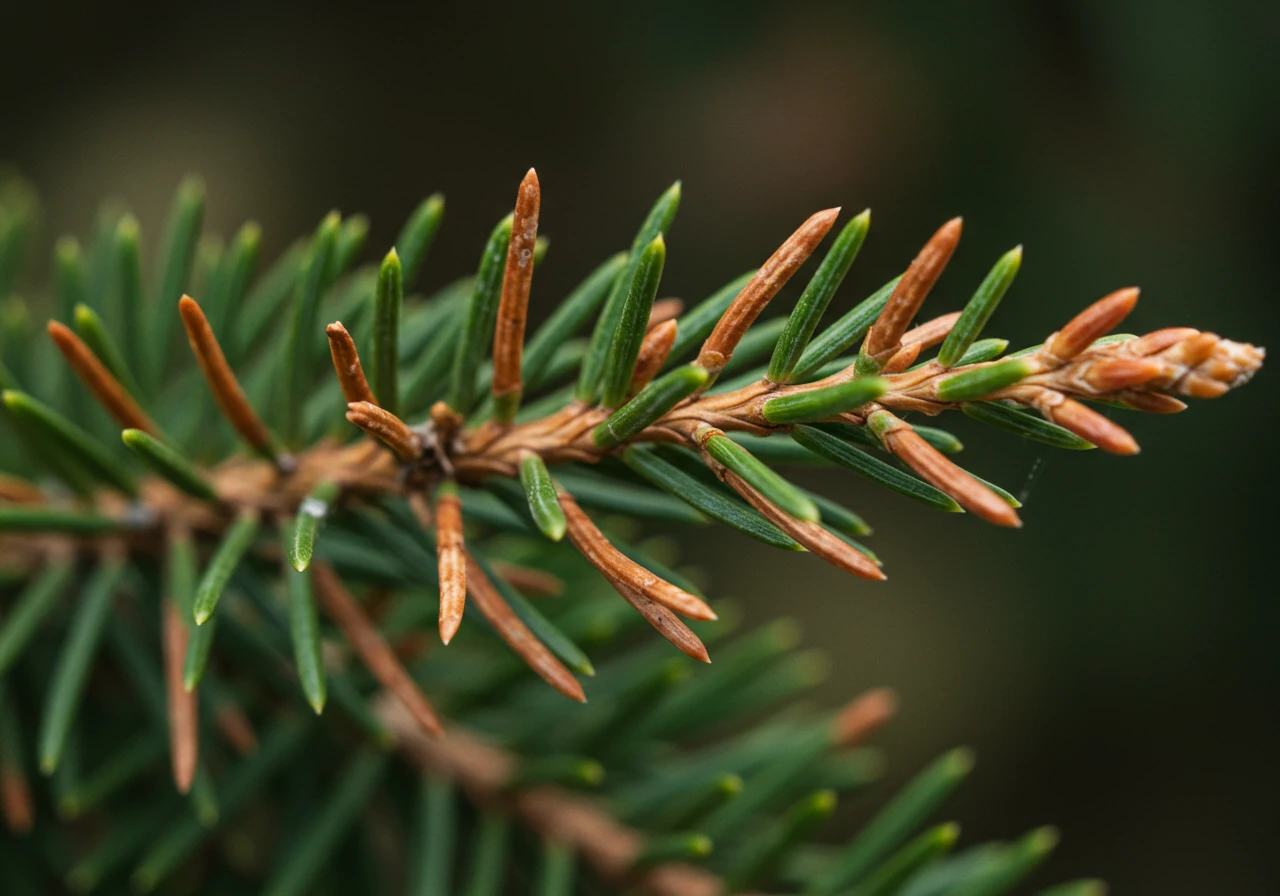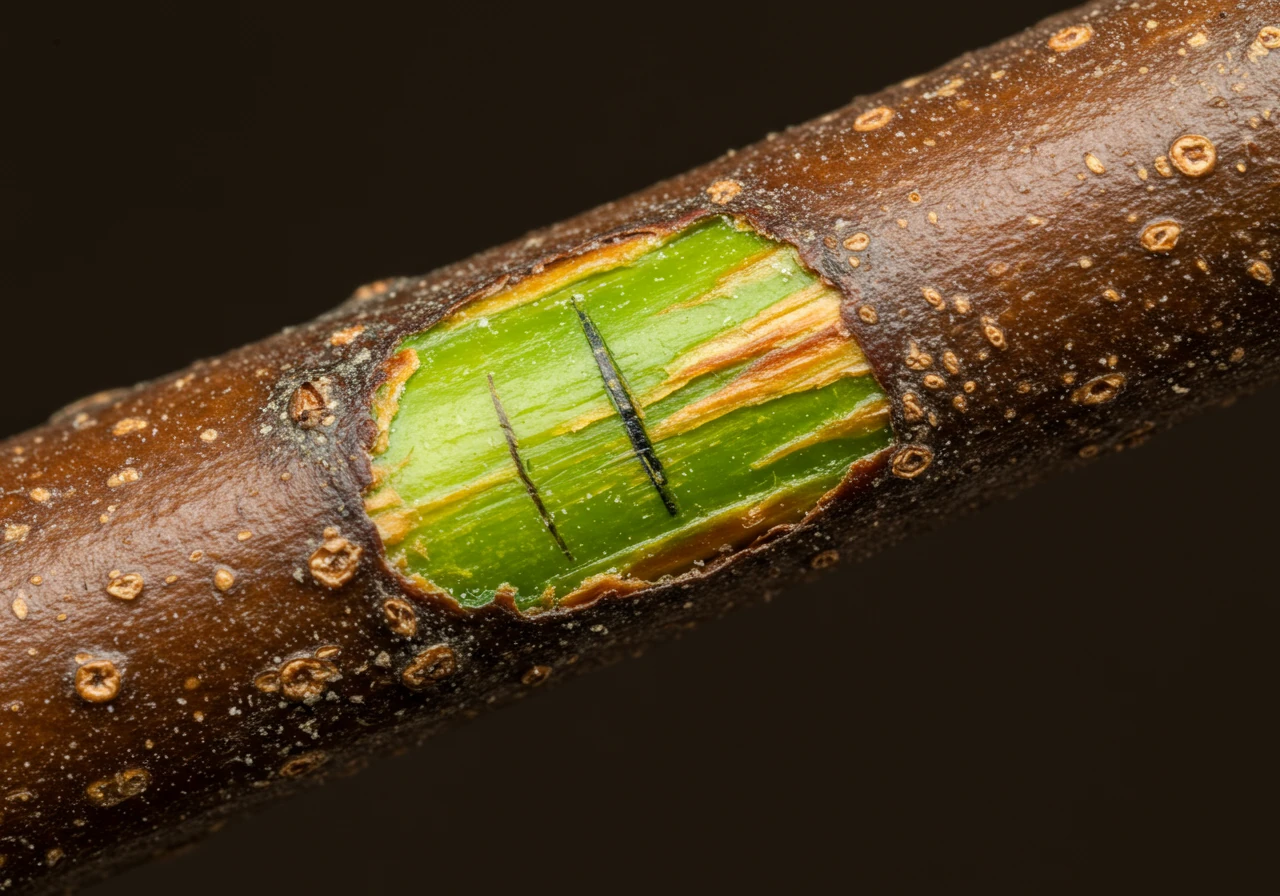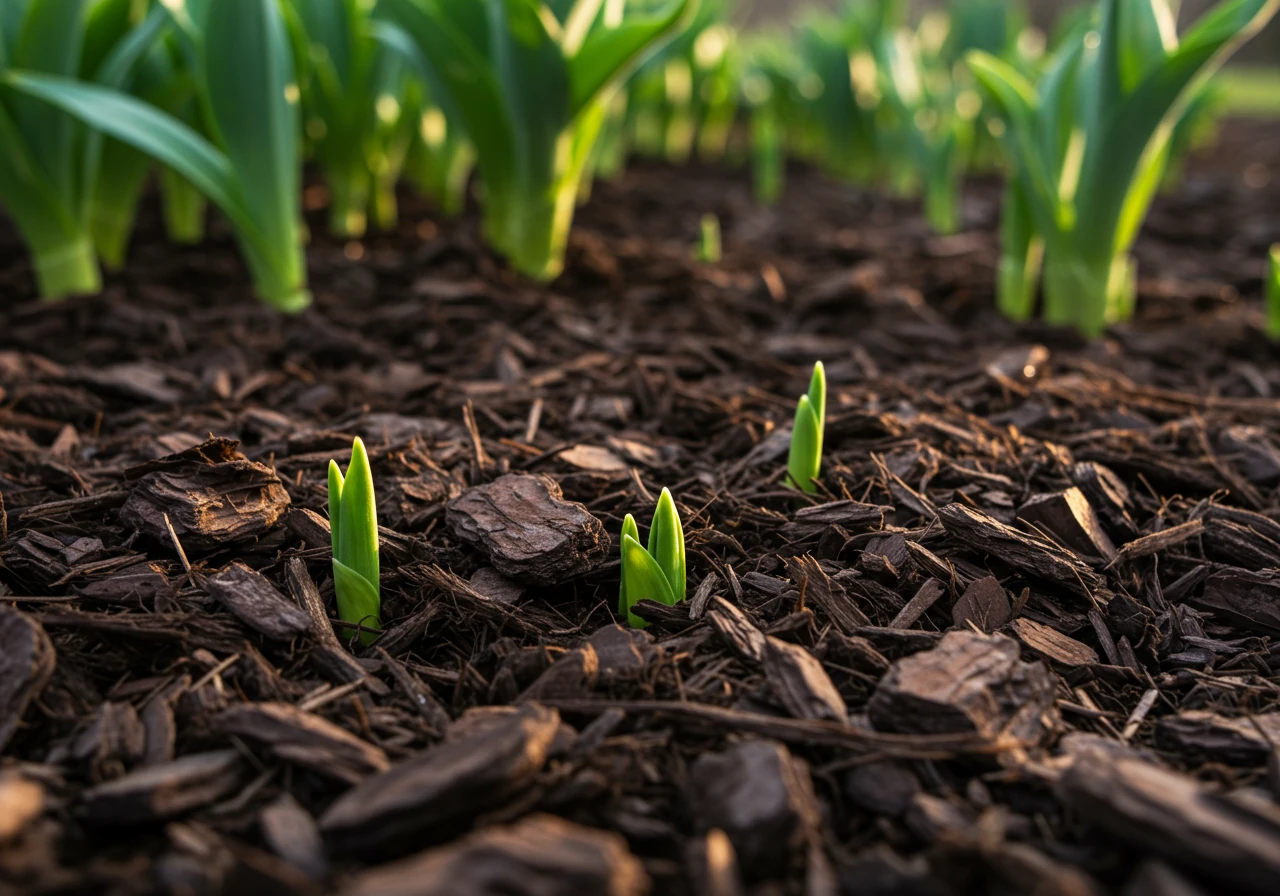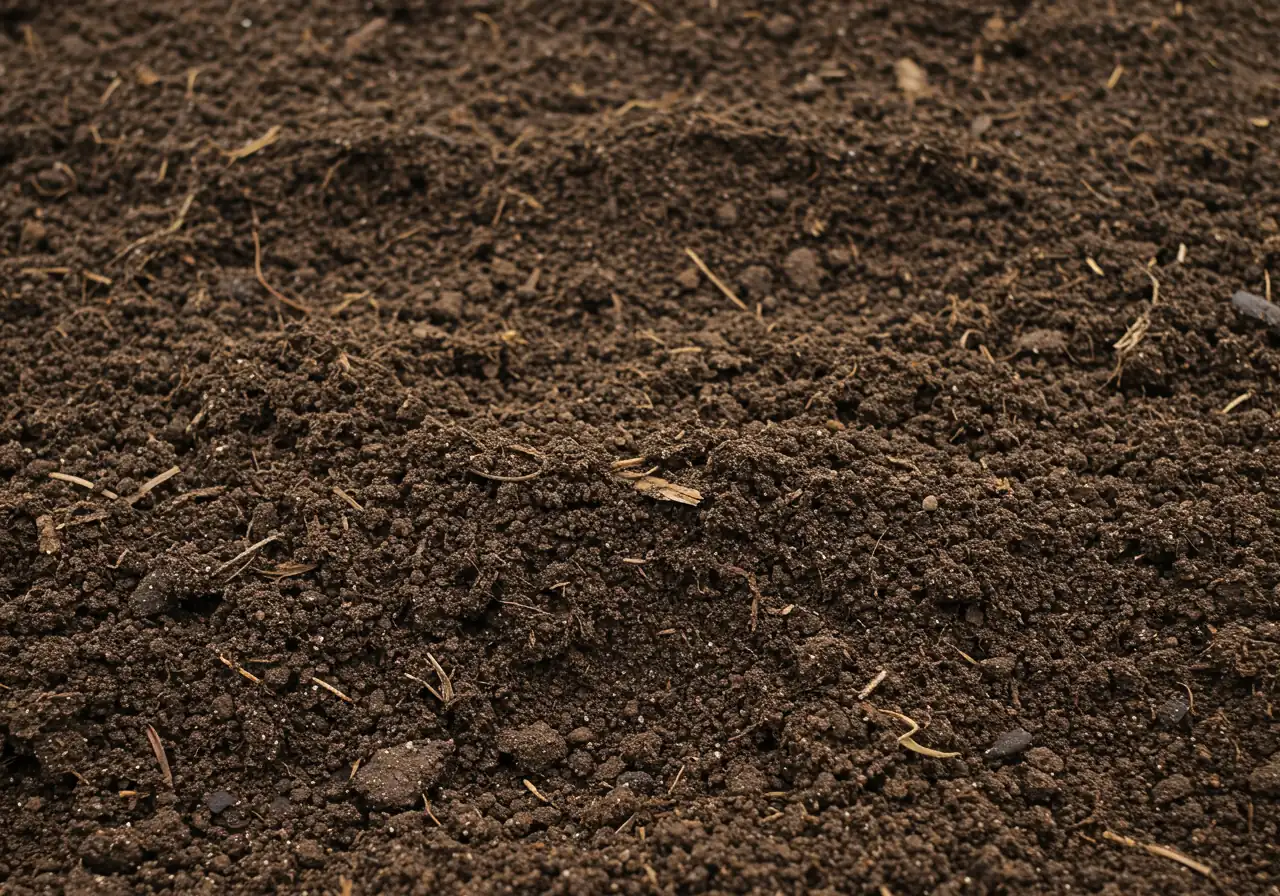Metcalfe Spring Recovery Plan: Rescue Thaw-Damaged Plants
Is your garden showing signs of winter stress? Don't wait! Request a quote today for professional spring cleanup and garden recovery services.
Request Your Quote NowQuick Guide to Spring Garden Recovery:
- Assess damage carefully after thaw: look for frost heave, winter burn, broken branches, salt damage.
- Perform first aid: prune dead/broken parts, gently resettle heaved plants, water wisely.
- Improve soil health with compost for long-term resilience.
- Choose climate-appropriate plants (Zone 5 or colder for Ottawa).
- Plan proactive fall prep: cleanup, deep watering, mulching, protection for sensitive plants.
Introduction: Spring's Unpredictable Thaw in Metcalfe – Is Your Garden Ready?
Well, we made it! Another Ottawa winter is mostly behind us, and the promise of warmer days is in the air. But if you live in Metcalfe, or nearby spots like Greely and Osgoode, you know spring doesn't always arrive gracefully. It often plays a game of freeze-tag with our gardens, doesn't it? One day it's melting, the next it's icy again. This wild spring thaw rollercoaster can leave our carefully tended landscaping looking a bit worse for wear.
Think soggy, compacted lawns, perennials heaved right out of the ground, or maybe even shifting walkway stones. It's frustrating! That unpredictable freeze-thaw cycle isn't just messy; it can cause real damage to your lawn and garden beds. But don't despair! The goal of this article isn't just to commiserate about muddy boots; it's to give you a practical recovery plan. We'll walk through simple steps to assess the spring thaw damage and get your Metcalfe garden back on track for a glorious growing season. Let's get ready to garden!
Decoding the Damage: What Winter Really Did to Your Ottawa Valley Plants


Okay, Ottawa winter, you've done your thing. While we were cozy inside, our poor plants were out there braving the cold, snow, ice, and those wild temperature swings we know so well. Sometimes, spring rolls around, the snow melts (finally!), and we find our garden looking a little... well, shell-shocked. From Barrhaven to Manotick, it’s a common sight after a tough winter. So, what exactly happened out there while we weren't looking? Let's decode the common types of winter damage your plants might be showing.
Frost Heave
One of the biggest culprits, especially for perennials and newer shrubs, is frost heave. Remember those freeze-thaw cycles mentioned earlier? They don't just make the ground muddy; they can literally push plants right out of the soil! Imagine the ground freezing, expanding upwards like a loaf of bread rising, carrying the plant roots with it. When it thaws, the soil might settle back down, but the plant is left slightly higher. Repeat this a few times, and you can find plants sitting awkwardly on top of the soil, their roots exposed. Our region's heavy clay soil, common in areas like Osgoode and parts of Metcalfe, can hold a lot of water, making this upward push even more dramatic. Proper preparation can really help minimize this, which is why we shared those Metcalfe fall garden frost protection tips back in autumn.
Winter Burn
Then there's the dreaded winter burn on evergreens. See brown, dry, crispy needles or leaves on your cedars, pines, yews, or rhododendrons? That's often winter burn. It happens when evergreen foliage loses moisture to dry winter winds and sun (especially on surprisingly bright, cold days), but the ground is frozen solid, preventing the roots from soaking up any replacement water. It's like being incredibly thirsty with a frozen water bottle! A good layer of mulch applied correctly in the fall can help moderate soil temperature fluctuations and retain precious moisture, something detailed in these Metcalfe mulch installation tips.
Salt Damage
If your property is near streets or sidewalks, especially in busier areas, you might notice salt damage. Salt spray kicked up by plows or salty meltwater running off pavement can land on plants, causing scorched-looking brown edges on leaves or needles and even branch dieback. This damage often becomes most apparent in spring as plants try to put out new growth. Keeping garden beds clean and providing some protection if possible is part of good yard maintenance. This is often tackled by thorough fall cleanup services in Metcalfe before the snow and salt arrive.
Broken Branches & Critter Damage
Don't forget the simpler, brute-force damage: broken branches. Heavy snow loads or freezing rain can weigh down branches on trees and shrubs, causing them to snap or split. And finally, hiding beneath that insulating snow cover, hungry voles and rabbits might have decided the bark at the base of your favourite shrubs or young trees looked like a tasty meal. This chewing, called girdling, can strip the bark right around the trunk and can be very serious, even fatal, to the plant. Keeping an eye out for pests and wildlife damage throughout the year is a crucial part of landscape health; it's a cornerstone of effective Metcalfe integrated plant care.
Spotting these different types of winter injuries is the crucial first step toward recovery. If your yard looks like it went twelve rounds with Old Man Winter and you're feeling overwhelmed, getting professional help is always an option. An Ottawa city yard cleanup service can certainly help tackle the initial mess and assessment, and for addressing specific plant health issues or planning preventative care for next year, exploring our full range of landscaping services might give you the solutions you need. Now that we know what might have happened, let's look at how to nurse your garden back to health!
Playing Plant Detective: Your Step-by-Step Damage Assessment Guide

Alright, garden sleuths, grab your trusty trowel and maybe a cup of coffee – it’s time to put on your plant detective hat! The big spring melt across Ottawa, from Richmond to Winchester, has revealed our landscapes, and sometimes, the scene isn't quite as pretty as we hoped. Assessing winter damage is key to a successful recovery plan. Don't worry, it's easier than solving a mystery novel! Let's break it down, step-by-step.
Step 1: The Big Picture Scan
Take a slow walk around. Look for obvious issues: broken branches, leaning/heaved plants, large brown patches, matted perennials, general debris. If it's too messy, consider a comprehensive Ottawa yard cleanup service first.
Step 2: Get Up Close
Zoom in on individual plants. Check stems for plump buds. Look for tiny green shoots at perennial bases. Inspect evergreens for green growth further down branches, beyond brown tips.
Step 3: The "Scratch Test"
On woody stems that look dead, gently scratch the bark. Green underneath = ALIVE! Brown and dry = likely dead section. Wait on pruning until you're sure.
Step 4: Root Check (Heaved Plants)
Gently check exposed roots on heaved plants. If thawed, carefully press the plant back into the soil, cover roots, and water well. Add mulch for stability - consider professional proper mulching and edging.
Step 5: Know the Signs
Hopeful signs: Swelling buds, green scratch test, new shoots, firm roots. Uh-oh signs: Mushy parts, fully brown/dry stems, no buds late in spring, girdled bark. Be patient with slow starters! If replacements are needed, get expert advice on material selection.
Completing this assessment helps you prioritize your spring tasks. If you're facing widespread issues or just need a hand getting things back in shape, remember that professional help is available, whether it's a specific Metcalfe yard cleanup service or even specialized assistance like getting your Marionville garden beds tidy. And for those truly overwhelming situations, a full professional city yard cleanup service can be a lifesaver. Happy investigating!
Need help assessing the damage or starting the cleanup? Our experts can help!
Explore Our Cleanup Services*Approximate frequency based on common observations.
The Metcalfe Medic Bag: First Aid for Your Frostbitten Flora

Okay, you’ve played detective and surveyed the scene. Maybe your garden looks like it hosted a wild winter party without your permission. Don't fret! Now it's time to open our metaphorical "Metcalfe Medic Bag" and provide some immediate first aid to help your plants bounce back. Think of it as triage for your tulips and TLC for your trees!
1. Pruning Power: Snip Away the Sadness
- Broken Bits: First things first, carefully prune away any branches clearly broken by snow or ice. Make clean cuts just outside the branch collar or back to the nearest healthy bud/branch. Use sharp, clean tools!
- Dead Ends: Prune confirmed dead branches (from scratch test) back to live wood. For iffy shrubs (hydrangeas, roses), wait for new growth, then prune above the highest live buds. Hold off pruning spring bloomers (lilacs, forsythia) until *after* flowering.
- Eco-Tip: Small, disease-free twigs can be composted. Check local guidelines for larger branches.
2. Frost Heave First Response
If plants were pushed up:
- The Gentle Tuck-In: Wait for thawed soil. Gently push the crown/roots back down to the original planting level. Firm soil around the base.
- Water Well: Helps settle soil and rehydrate roots.
- Mulch for Stability: Apply fresh mulch after resettling to prevent more heaving and retain moisture. Explore options for proper mulching and edging for a clean look and plant protection.
3. Water Wisely: Quench Their Thirst
Windy spring days can dry soil quickly, especially for plants near Kars or with damaged roots.
- Check the Soil: If the top inch or two feels dry, water.
- Water Deeply: Encourage deeper roots with thorough soakings, not light sprinkles. Aim water at the plant base.
- Eco-Tip: Consider a rain barrel for sustainable garden watering. Check out City of Ottawa water conservation tips.
4. Soothe Salt Stress
For plants near roads/walkways, common in many Ottawa neighbourhoods:
- Flush It Out: If rain is scarce, deep waterings can help leach salt from the root zone.
- Prune Patiently: Wait for new growth to clearly see dead sections before pruning salt-damaged parts.
- Plan Ahead: Consider burlap barriers next winter. Consistent care helps prevent issues; consider integrating help with regular city garden maintenance service.
Remember, patience is crucial! Give plants time. If damage is extensive, professional help like a complete Ottawa garden clean up service or targeted Metcalfe property cleanup service can make a difference. Even tackling specific areas, like with a Marionville property cleanup service, helps. Curious about costs? Submit details for estimate feedback.
Beyond the Band-Aid: Long-Term Recovery and Future-Proofing Your Garden

So, you’ve applied the first aid, tidied up the obvious winter messes, and maybe even apologized to that shrub the snowplow tried to redecorate. Good job! But true garden recovery isn't just about patching things up; it's about building resilience for the future. Think of it as taking your garden from the emergency room to a long-term wellness plan. Let’s ditch the band-aids and talk about making your landscape tougher for next winter’s shenanigans.
It all starts below ground. Healthy plants need healthy soil – it's their pantry, their water cooler, and their anchor! Over time, soil can get compacted or lose nutrients. Improving your soil structure by adding organic matter like compost each year is fantastic. This helps with drainage (less soggy spots!) and water retention (less drought stress!). Building this healthy foundation through proper soil preparation is probably the single best long-term investment you can make in your garden's health. When plants are recovering from winter damage, go easy on the fertilizer. Wait until you see stable new growth, then consider using a slow-release fertilizer or just top-dressing with compost. Pushing too much growth too quickly can stress them further.
Next up: choosing the right team players. Let’s be honest, some plants just aren't cut out for an Ottawa winter. Trying to grow something meant for a warmer climate is like sending a poodle to pull a dog sled – brave, but probably not ending well. Opt for plants rated for our Zone 5 climate (or even colder, Zone 4, for extra toughness!). Think sturdy perennials like Coneflowers (Echinacea), Black-Eyed Susans (Rudbeckia), Hostas (great for shade!), and Sedum 'Autumn Joy'. For shrubs, consider Serviceberry, Dogwood varieties, or hardy Potentilla. Selecting hardy, appropriate species is crucial, especially when planning a new garden installation. Making smart choices from the start saves heartache later. Need ideas? The Master Gardeners of Ottawa-Carleton website is a great local resource.
Finally, let’s talk prevention with proactive fall preparation. Don't wait until the first snowflake! As gardeners in Russell or Embrun can tell you, a little prep goes a long way. Create a simple ‘Fall Prep Checklist’:
- Clean Up Crew: Remove diseased foliage and excessive leaf litter. Getting professional help, like a thorough Metcalf garden clean up service, handles this efficiently.
- Water Deeply: Give trees, shrubs, and perennials deep waterings before the ground freezes.
- Mulch Magic: Apply 2-3 inches of mulch after the ground cools but before freezing hard.
- Wrap It Up: Protect young trees with tree wrap. Shield sensitive evergreens with burlap screens.
Taking these steps builds a stronger, more resilient garden. It’s about working with our climate. Don't forget overall yard health contributes too, including consistent lawn care. If fall is busy, remember services like a Marionville property cleanup service can help. Investing time in the fall pays off big time come spring! Find local gardening events and tips via Friends of the Central Experimental Farm.
Metcalfe Spring Rescue: Top 5 Tips Cheat Sheet
Winter waved goodbye, leaving a bit of a mess? Don't despair! Even if your Nepean or Metcalfe yard looks like it wrestled a grumpy polar bear, recovery is totally doable. Here's your quick cheat sheet:
- Clear the Clutter First: Rake up leaves & debris to see the situation. If it's overwhelming, get help with expert property clean up.
- Check Plants & Snip Smartly: Do the scratch test. Check for buds. Prune *only* confirmed dead/damaged parts cleanly. Lost plants? Envision new landscape transformations.
- Lawn Love & Repair: Gently rake matted grass. Aerate/overseed bare patches. For major issues, consider professional sod installation.
- Root Rescue & Soil Boost: Resettle heaved plants gently. Top-dress beds with compost. An Ottawa property cleanup service often includes bed prep.
- Think Ahead (Seriously!): Learn from this spring. Plan better fall prep: watering, mulching, protection. Booking a fall city property cleanup service makes it easier.
Follow these steps, be patient, and your Ottawa garden will thrive!
Quick Comparison: Recovery Methods
| Issue | Quick Fix | Long-Term Solution | Professional Help Option |
|---|---|---|---|
| Frost Heave | Gently resettle plant, water well | Improve soil drainage, apply fall mulch | Mulching Services |
| Winter Burn | Wait for new growth, prune dead tips | Proper fall watering, burlap wrap for sensitive plants | Garden Maintenance Plan |
| Broken Branches | Prune cleanly back to healthy wood | Select sturdy plants, proper pruning techniques | Tree & Shrub Pruning |
| Salt Damage | Flush soil with water (if needed) | Use salt-tolerant plants near edges, barriers | Plant Selection & Installation |
| Compacted Soil | Gentle raking (lawn), avoid walking when wet | Annual compost addition, aeration | Soil Preparation Services |
Your Ottawa Spring Garden Questions Answered (FAQ)
Spring gardening in Ottawa can bring up a flurry of questions, especially after a long winter! Here are answers to some common queries we hear from folks in areas like Metcalfe, Barrhaven, and beyond.
Patience is key! While it's tempting to rush out during the first thaw, wait until the ground is mostly thawed and not soggy mud. Trampling wet soil compacts it – bad news for roots! In areas like Greely or Osgoode, mid-to-late April is often safer. Focus on light tasks like picking up litter or broken twigs first. Major raking or digging should wait until things dry out a bit more.
Don't panic! Gently rake away matted grass and dead patches to improve air circulation. This often reveals snow mold damage, common across Ottawa. Let the area dry out. For minor issues, overseeding might be enough. For significant damage or if you want faster results, a professional assessment can help. Our city garden clean up service often includes lawn assessment as part of getting your yard back in shape.
Hold your horses! Most plants, especially those stressed from winter, don't need immediate fertilizer. Wait until you see active, stable new growth. Early fertilization can sometimes encourage weak growth or burn struggling roots. Focus on good soil health with compost first. If unsure about specific plant needs in your Barrhaven garden, it's best to wait or get tailored advice. You can always contact us with specific questions.
Not necessarily! Some perennials are notoriously late risers, especially after a harsh Ottawa winter. Butterfly bush and some ornamental grasses can look dead until late May or even June. Perform the 'scratch test' on woody stems if applicable. Give them ample time and warmth before making the final call. If you need help assessing or tidying beds while you wait, a focused cleanup like our Marionville yard cleanup service can target specific areas.
Early detection is great! Remove and dispose of (don't compost!) clearly diseased leaves or stems. Prune away any branches showing signs of overwintering pests like scale insects. Avoid harsh chemical treatments immediately; sometimes simple removal and good airflow solve minor issues. Learning about us shows our focus on integrated plant health, prioritizing sustainable solutions first whenever possible in our landscaping approach. Check resources like the Invasive Species Centre (Ontario) for identification help.
Generally, a good spring cleanup tackles debris removal, leaf blowing/raking, garden bed edging, and sometimes initial lawn care like dethatching. Specifics vary, so it's wise to clarify the scope beforehand. Understanding the service agreement, often detailed in the company's terms and conditions, ensures everyone is on the same page about what tasks are included for your Metcalfe property's spring spruce-up. Our Google My Business page also showcases reviews and service examples.
Note: We also value your privacy, see our privacy policy. And after service, we hope you reach our thank you page!
Give Your Metcalfe Garden the Comeback it Deserves!
Whew! We’ve covered a lot, from playing plant detective after the spring thaw to applying some much-needed garden first aid. It might seem like your Metcalfe garden went through the wringer this winter, but don't hang up your trowel just yet! With a little know-how and action, that patch of brown or those slightly sad-looking shrubs can bounce back beautifully. Remember the key steps: assess the situation honestly, give immediate care like pruning and resettling, and think long-term with soil health and smart planting choices. Your green space has amazing resilience, just like us hardy Ottawa Valley folks!
Feeling inspired but maybe a tad overwhelmed by the task ahead? That's perfectly okay! Sometimes, calling in the cavalry is the best way to ensure your garden gets the expert TLC it needs to shine this summer. If you're in Metcalfe, Manotick, Greely, Osgoode, or surrounding areas and need a hand turning winter woes into garden wows, we're here to help. Ready for a fresh start?
Let's work together to give your garden the glorious comeback it truly deserves!
- 📞 Call us to schedule your comprehensive Spring Cleanup Service.
- 📧 Email us to discuss Garden Bed Restoration or other landscaping solutions.
View All Landscaping Services
We also offer specialized services like Ottawa property cleanup and city property cleanup services tailored to your needs.

